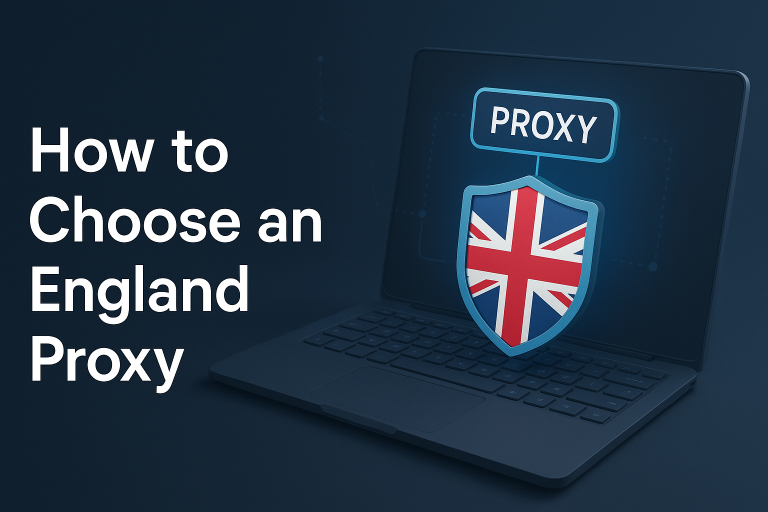Navigating the maze of proxy providers can feel like wandering through a dense London fog – exciting, mysterious, yet a little bewildering. When you need reliable access to UK-based services or want a local IP footprint, an england proxy can be your secret handshake. But with so many options on the market, how do you separate the best from the rest without getting lost in technical jargon?
Understanding the Role of England Proxies
Think of a proxy as a discreet courier: you hand off your web request, and it delivers that request on your behalf from a UK address. This “middleman” setup masks your real origin, making it appear as though you’re browsing from London, Manchester, or Edinburgh. Whether you’re monitoring local search rankings, testing geo-specific ad campaigns, or ensuring compliance with regional licensing, the right England proxy becomes an indispensable tool – like having a local guide in a foreign city, ready to navigate streets you’ve never walked before.
Key Criteria to Consider When Selecting a Proxy
Before committing to a subscription, ask yourself: What matters most – speed? Anonymity? Flexibility? Jot down your priorities and use this checklist to compare providers:
- Location Precision: Does the provider offer proxies in multiple English cities, or just “UK” at large?
- Bandwidth and Throughput: Will your tasks require sustained high speeds, or sporadic bursts of data?
- Anonymity Level: Do you need elite-level masking (no headers) or will basic obfuscation suffice?
- IP Rotation: Are rotating addresses critical for large-scale scraping or session-based tasks?
- Customer Support and Uptime: Can you rely on 24/7 assistance, SLA guarantees, and low downtime?
Keeping these five factors front of mind will help you cut through marketing buzzwords and zero in on the solution tailored to your workflow.
Types of Proxies Available in England
Not all proxies are built alike. Below is a quick comparison to help you see which flavour suits your project:
| Proxy Type | Speed | Anonymity | Ideal Use |
| Datacenter | High | Medium | High-bandwidth tasks |
| Residential | Moderate | High | Web scraping, data gathering |
| Rotating | Varies (moderate) | High | Large-scale scraping |
| Dedicated | Very High | High | Streaming, gaming |
Imagine each row as a different vehicle: a datacenter proxy is a sports car – fast but obvious. A residential proxy is a sedan – slightly slower but blends into traffic. Rotating proxies are like a fleet of rented cars, swapping every so often. Dedicated proxies are your personal limousine – top performance and privacy.
Practical Steps to Evaluate Proxy Performance
Once you’ve zeroed in on a type, it’s time to test drive. Follow these hands-on steps:
- Latency Check: Use tools like Ping or traceroute to measure response times from various UK endpoints.
- Throughput Test: Download and upload sample files to gauge real-world bandwidth under peak hours.
- Header Inspection: Verify that identifying headers are stripped or rewritten to protect your identity.
- Error Monitoring: Simulate heavy loads and watch for drops, timeouts, or blocked connections.
- Geo-Validation: Access region-locked content (e.g., a local news site) to confirm true UK geolocation.
Each test reveals critical insights: does the proxy slow your tasks to a crawl, or glide through requests like a well-oiled machine? Treat each trial as a mini experiment – record your findings in a simple spreadsheet to compare apples to apples.
Security and Privacy: What to Look For
Speed alone won’t cut it if your data is vulnerable. Prioritise:
- Encryption Protocols: Look for HTTPS or SOCKS5 support to guard data in transit.
- No-Log Policies: Insist on providers that commit, in writing, to not record your activity.
- Authentication Options: Rotating IPs? API keys? Choose a provider that offers secure authentication methods.
- Reputation and Reviews: Scan forums and tech blogs for first-hand accounts – word-of-mouth still carries weight.
Think of these measures as locks on your front door: without them, you might have the fastest ride in town, but you’re also leaving the trunk open for anyone to peek inside.
Managing Costs and Subscription Plans
A proxy service is an investment. Plans often vary by:
- Number of concurrent connections
- Monthly data allowance
- Tiered pricing for different proxy types
Use the table below as a budgeting tool:
| Plan Tier | Price (per month) | Data Cap | Connections | Proxy Type |
| Basic | $10 | 50 GB | 5 | Shared |
| Standard | $25 | 200 GB | 10 | Rotating |
| Professional | $50 | 500 GB | 20 | Dedicated |
| Enterprise | Custom | Unlimited | Unlimited | Mixed |
- Start Small: Opt for a lower-tier plan if you’re experimenting.
- Scale Up: Move to higher plans once you’ve validated performance.
- Seasonal Adjustments: Downgrade during low-traffic periods to save.
By aligning your usage with realistic needs, you’ll avoid overpaying for idle capacity – just like choosing the right mobile phone plan for your monthly calls and data.
Choosing the right England proxy is less about grabbing the cheapest ticket and more about booking the destination that aligns with your itinerary. By understanding the nuances of different proxy types, rigorously testing performance, and balancing cost against value, you’ll secure a dependable channel that keeps your operations smooth and your data safe. Now, which proxy will be your next trusted companion on the digital streets of Britain?


